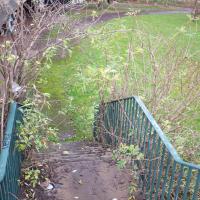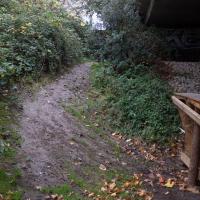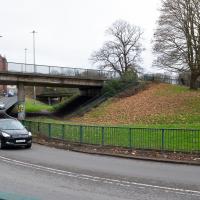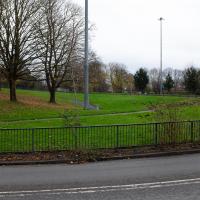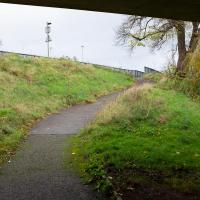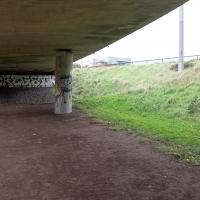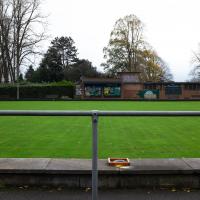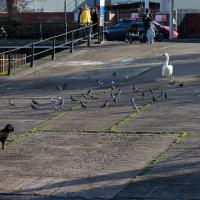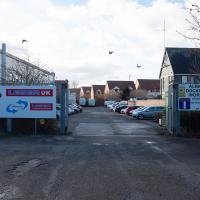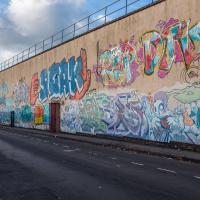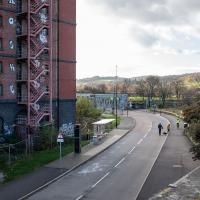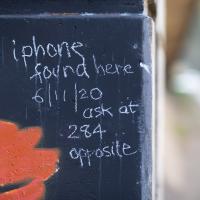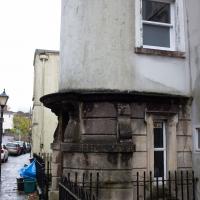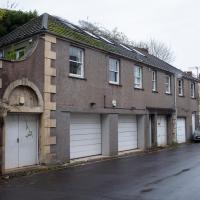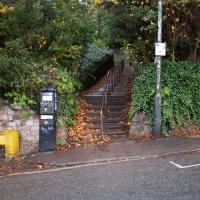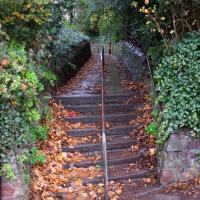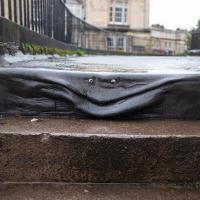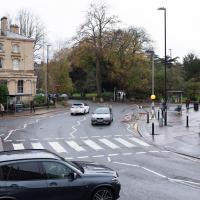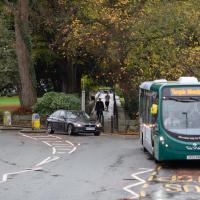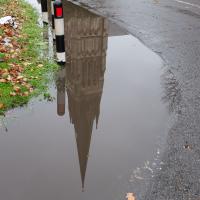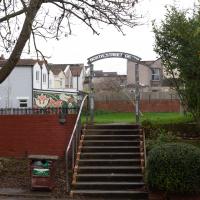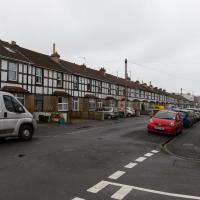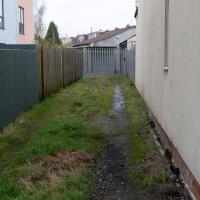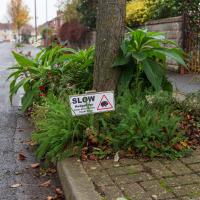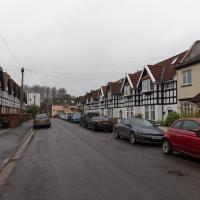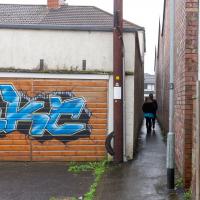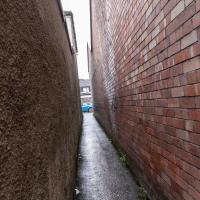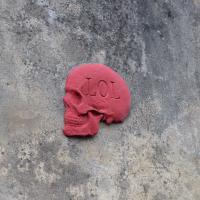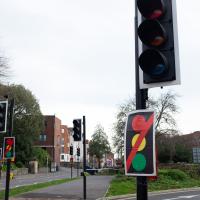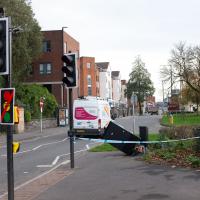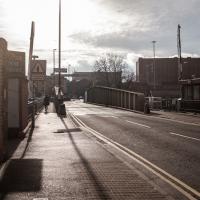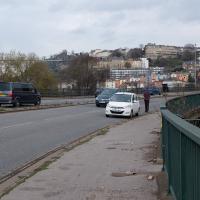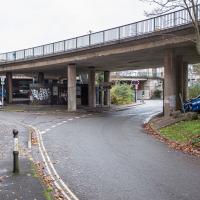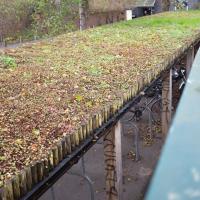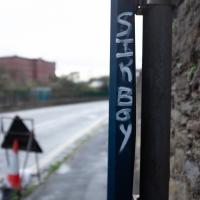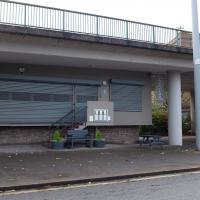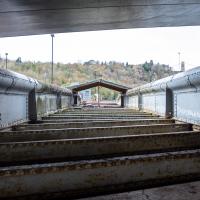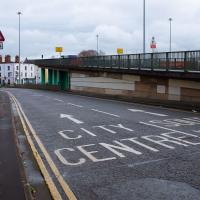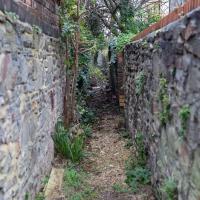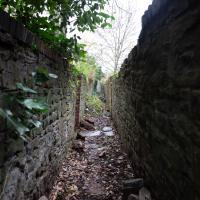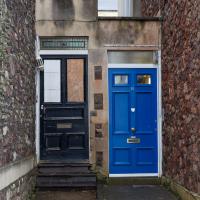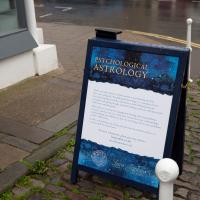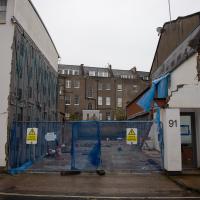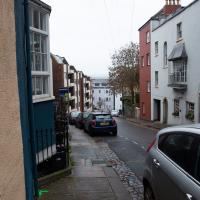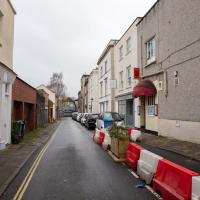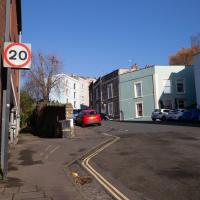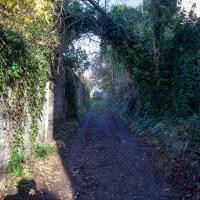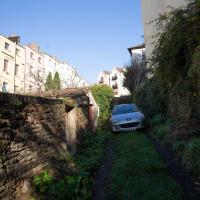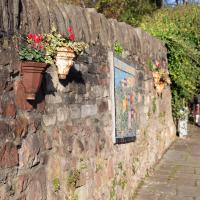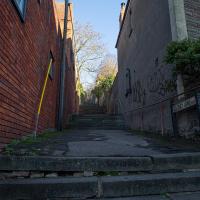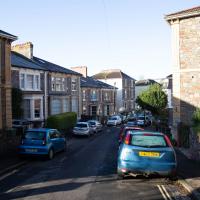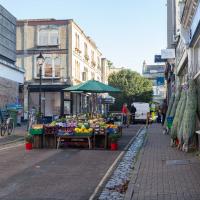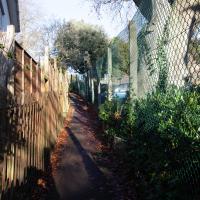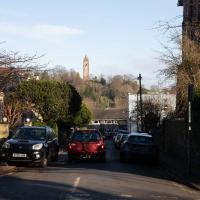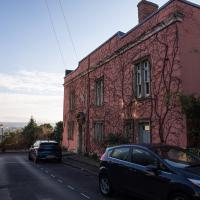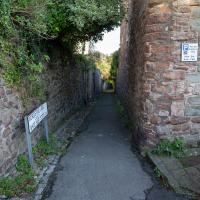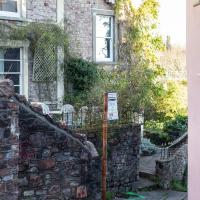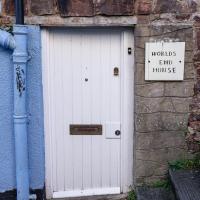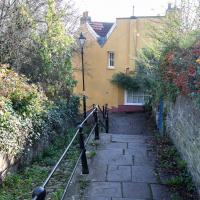Tagged: road-surface
In which our intrepid hero levels up.
I keep on thinking there might be a quick way to Greville Smyth from here, but I think the only shortcut is up that muddy slope to the staircase on the left. And it's quite steep and very slippery-looking, so I've never tried it.
The other way to get to Greville Smyth more quickly from there would be to go up that set of steps, but it would mean vaulting the railings, and I don't really do vaulting.
Quick Coffee
19 Nov 2020
A sunny day, and though I should have probably headed for less well-travelled territory I just headed over to the Marina to grab a flat white from Imagine That's horsebox café.
Clifton Village Mini Wander
20 Nov 2020
Just a quick wander up the hill to get a flat white from Twelve. I really enjoyed the spooky mannequin (?) in the window.
The one nearest is an AirB&B-style rental and looks lovely inside. This is the kind of quirkiness I might aspire to.
Many a time have I wandered down this little cut-through that joins Saville Place and the Fosseway. A shortcut through the Polygon starts me off, then it's pretty much a straight line up through to here and on to Queen's Road.
I wonder how many times I've crossed this zebra crossing, or cut across the road at the little traffic island in the background to get to the diagonal path across Victoria Square?
Bedmo and Ashton Court
21 Nov 2020
A rather more wide-ranging weekend wander with Sarah and Vik, taking in some mock Tudor bits of Bedmo (I should note that I've subsequently been corrected to "Bemmie", but I'm an outsider and have been calling it "Bedmo" for short for decades...), a chunk of Ashton, a path up Rownham Hill called Dead Badger's Bottom(!), The Ashton Court estate, a bit of the UWE campus at Bower Ashton, and some of the Festival Way path.
I have no idea how anyone managed to smack this street furniture so hard, or what direction they came from to do it. It's a pretty straight 30mph road right there, and this is only one side of the dual carriageway. Never seen so much as a near-miss there.
That a BMW came a tad too fast out of Clifton Vale, lost it completely and trashed the main control box for the traffic lights. It took them quite some time to fix it. I'd imagine his insurance company is getting quite the bill...
I'm not sure I'd be waiting literally in the road here if my car had broken down. The continual strewing of the pavements on these flyovers with broken bits of cars, vans and lorries, large and small, suggests that smashes are pretty frequent.
Underpass
25 Nov 2020
A quick lunchtime jaunt for coffee. I've often wondered about the dots on the wall of the underpass. Apparently they're not intelligible Braille. Maybe it's Marain :D
Given that it's on an unwalled bike shed, I doubt it's there for insulation. The CREATE centre my just have it there as an example of what an eco-friendly roof can look like, though.
When I first moved to Hotwells, there were still signs for the famous transport caff "Popeye's Diner", a well-known refuelling point for truckers on the way in or out of Bristol. It was also the cafe used for interior shots in some episodes of Only Fools and Horses. You can see it as it used to be in the "Trigger's broom" sketch, for one. These days it's a much posher affair, and they do a very good Eggs Benedict when they're open.
You can see a before/after comparison of how the interior looked when I moved to the area in the 1990s and how it looks now in this shot on Flickr that compares an Only Fools and Horses still with a modern shot.
A swinging footbridge, designed by Brunel, but not quite as famous, or these days as functional, as its counterpart in the distance.
Coincidentally, I deployed the word "corral" in an email the other day. I double-checked my spelling first, though.
The Cumberland Basin Flyover System is indisputably ugly, I'd say. At least you get presented with the rather lovely pink of the Rose of Denmark when you get through it and swing around onto the main Hotwell Road into town.
And Back Down the Hill from the Flu Jab
21 Nov 2020
This is my return from getting my annual flu jab at Christ Church, as explained in more detail in my wander up the hill.
I don't think this is exactly a public right of way. But I started so I tried to finish without getting the police called on me by worried residents
For some reason I'm reminded of the time I was browsing the sadly-now-gone Avon Books (which used to occupy 4a Waterloo Street, next to Kitchen Artillery, which occupies 4b) and found that all the books on subjects like this were collected into a section labelled "Mumbo Jumbo"
Used to be a fairly nondescript place with offices or a home—not sure which—over a double-garage, which seems to be the standard layout on this stretch of PVS. The only thing I remember about it is the only nondescript thing: it had a big flagpole jutting out of the top floor. You can still see a St George's Cross dangling from it on Google Street View.
Up for the flu jab
21 Nov 2020
A trip up the hill to get my winter flu jab. I'm not sure I really needed it this year, what with avoiding Covid—I haven't had so much as a sniffle in more than a year—but seeing as they offered... Instead of the doctor's surgery on Pembroke Road, they'd taken over Christ Church, presumably to give more room and ventilation for the necessary social distancing at the moment. As usual, it was their typically efficient operation, and I was in and out in about three minutes.
On the way there and back I snapped as much as I could, but I wanted to be home in time for the first online Times Crossword Championship. As it turned out, I needn't have bothered, as the technology at the Times couldn't keep up with the demand from competitors, and their system just collapsed under the weight of page-views. They tried again the day after, and it collapsed just as badly. Maybe next year...
This wander is split into two parts, as I turned my tech off to go into Christ Church for my jab. The walk home can be found over here.
This was meant to be the day of the first online Times Cryptic Crossword Championship. Sadly the Times's web servers let them down, so the event was a washout, and I dashed back from my flu jab to take part for no good reason, as it turned out.
Avoiding the Accounts
26 Nov 2020
I took the day off my day job to do my accounts—or at least do enough bookkeeping to send them to my accountant. I hate doing the books. I woke up late, tired and with a headache and decided to bunk off for a walk around Cliftonwood, Clifton Village and Clifton instead, taking in a couple of good coffees along the way. Thanks, Foliage Café, and Twelve for the flat whites.
The Long Lunchtime at the End of the World
27 Nov 2020
I took an extra-long break at lunchtime today as I'd taken the day off my normal day-job to do the accounts for my previous side-job, which is still generating paperwork, though not much in the way of money. This took me through some undiscovered bits of Cliftonwood, including Worlds End Lane, which unexpectedly leads to White Hart Steps. That's certainly not where I expected the end of the world to lead to...
I came up here drunk one night, searching for a shortcut home from somewhere around the Triangle. At least this time I was reasonably sure I'd not get out of the far end here.
You'll have trouble getting the bus up the White Hart steps.
Edit to add: According to my friend Jess (a very reliable source of information about Cliftonwood who's quoted in this Bristol Post article about the bus stop) it was put in 15 years ago as part of the West Bristol Arts Trail...

